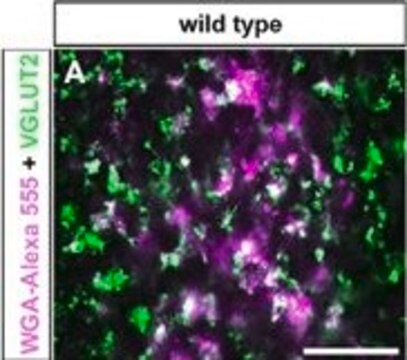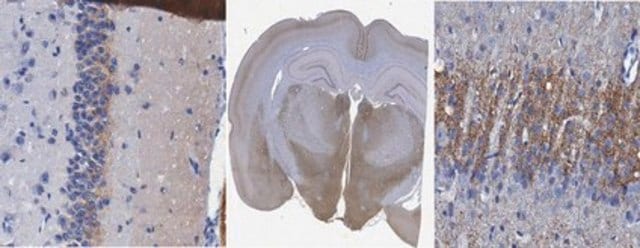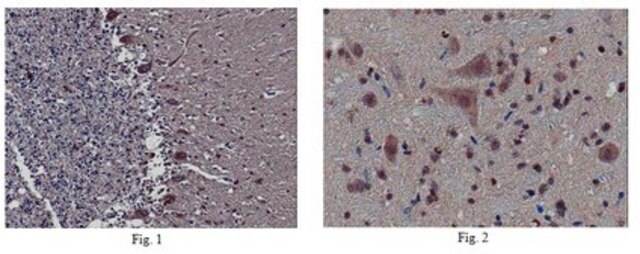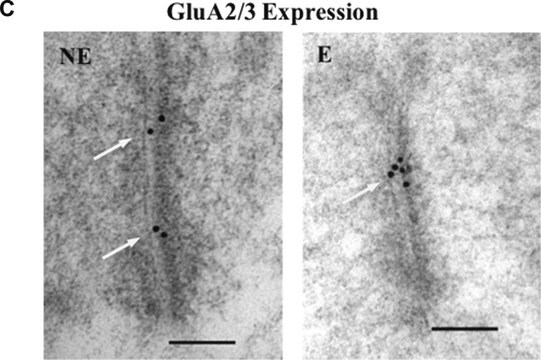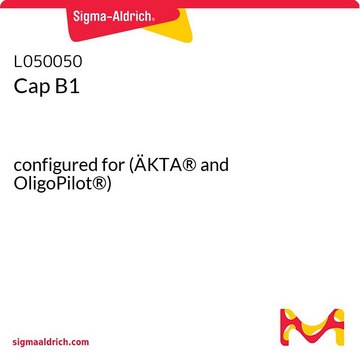MAB5502
Anti-Vesicular Glutamate Transporter 1 Antibody
CHEMICON®, mouse monoclonal, 3C10.2
Synonym(s):
Solute carrier family 17 member 7, Brain-specific Na(+)-dependent inorganic phosphate cotransporter, vGluT1
About This Item
Recommended Products
Product Name
Anti-Vesicular Glutamate Transporter 1 Antibody, clone 3C10.2, Chemicon®, from mouse
biological source
mouse
Quality Level
antibody form
purified immunoglobulin
antibody product type
primary antibodies
clone
3C10.2, monoclonal
species reactivity
mouse
species reactivity (predicted by homology)
rat
manufacturer/tradename
Chemicon®
technique(s)
immunohistochemistry: suitable
western blot: suitable
isotype
IgG1
NCBI accession no.
UniProt accession no.
shipped in
wet ice
target post-translational modification
unmodified
Gene Information
rat ... Slc17A7(116638)
General description
Specificity
Immunogen
Application
A previous lot of this antibody was tested on IH.
Optimal working dilutions must be determined by end user.
Neuroscience
Ion Channels & Transporters
Neuronal & Glial Markers
Quality
Western Blot Analysis:
1:500 dilution of this lot detected Vesicular Glutamate Transporter 1 on 10 μg of Mouse Brain lysates.
Target description
Physical form
Storage and Stability
Analysis Note
Brain
VGLUT1 Control Peptide AG208
Other Notes
Legal Information
Disclaimer
Not finding the right product?
Try our Product Selector Tool.
Storage Class Code
12 - Non Combustible Liquids
WGK
WGK 2
Flash Point(F)
Not applicable
Flash Point(C)
Not applicable
Certificates of Analysis (COA)
Search for Certificates of Analysis (COA) by entering the products Lot/Batch Number. Lot and Batch Numbers can be found on a product’s label following the words ‘Lot’ or ‘Batch’.
Already Own This Product?
Find documentation for the products that you have recently purchased in the Document Library.
Our team of scientists has experience in all areas of research including Life Science, Material Science, Chemical Synthesis, Chromatography, Analytical and many others.
Contact Technical Service